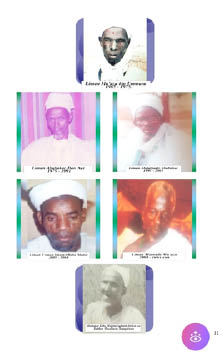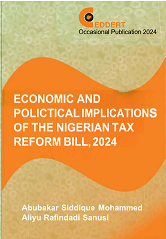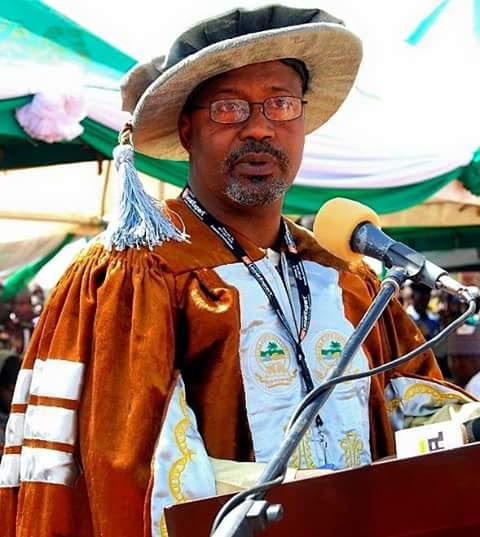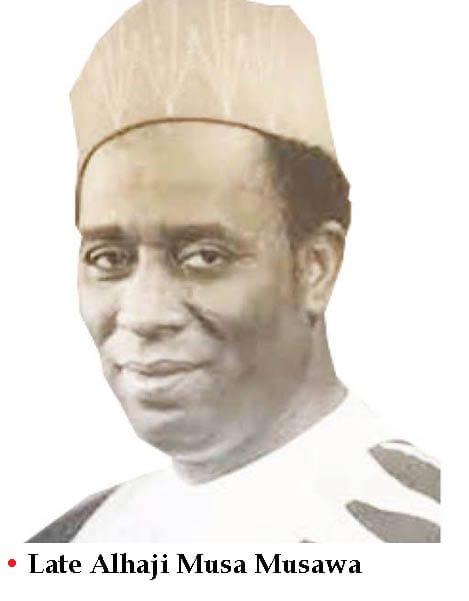Brief of The Islamic Scholars of Batagarawa

- Sulaiman Umar
- 26 Dec, 2023
- 1251
By Kasim
Batagarawa
The History of the renowned scholars of Batagarawa can be traced back to 15th century and the arrival of some people who were believed to descend from Mali axis on transit to sacred land of Mecca. These people were as generous as the then traditional rulers of Batagarawa; always busy handling; the affairs of people in terms of religious rites and responsibilities. They educated people and serve as consultative body to both the rulers and the ruled, they were also loved because of their decency and avoidance of power unless they were summoned for religious clarification or translation of Arabic transcripts as the case may be. It is therefore clear that the scholars were not palace scholars but rather were religiously and morally leading the affairs of people based on merit.
In terms of livelihood and economic
activities, the scholars were known to be engaged in various farming activities
of both food and cash crops in form of cereals, vegetables, tubers and fruits
as well as rearing of animals both livestock and poultry. They were
self-sufficient, selling animals and their by-products to their business
partners and are also known for providing various herbal medicines and
correctional services. They were also engaged in the production of various
clothing.
LIST OF KWAMAWA IMAMS OF BATAGARAWA
FROM THE ADVENT OF THE COLONIALISTS TO DATE WITH ACTUAL YEARS THEY LEAD.
1. Abdulmumini (Nini), the of son
Ummaru Kaki
2. Yusuf, the son of doton tsafe
3. Muhammadu Datti, the son of Ummaru
Kaki
4. Abdullahi, the son of mage, the son
of Sada Nasiru Ummaru Khaki
5. Imam Halliru (Makki) the son of
Muhammadu Datti the son of Ummaru Kaki ? - 1965
6. Imam Mu’azu the son of Ummaru Uba the son of Abdulmumini nini the
son of Ummaru Kaki-1965 - 1975
7. Imam Abubakar (Ɗan Aye) the son of Mamman Ƙyanƙyari the son of Muhammadu Datti
the son of Ummaru Kaki -1975 - 1991
8. Imam Abdulkadir the son of Abubakar
the son of Muhammadu Giɗaɗo the son of
Abdulmumini Nini the son of
Ummaru Kaki -- 1991- 2005
9. Imam Usman Halliru Makki the son of Muhammadu Datti the son of Ummaru Kaki -2005
- 2008
10. Imam Maiwada Mu’azu the son
of Ummaru Uba the son of Abdulmumini
Nini the son of Ummaru Kaki-2008 – to
date
They originated from the Mallawas
(Mali) who according to the history had a 31-years journey to Kano on their way
to Mecca in the 15th century from Senegambian Region in the year 835AH
(1431/32) (Tijjani, 1997) under the leadership of Abdurrahman Zaite (a great
scholar). They reached Hausaland on transit and missionary activities;
propagating islam. Some of the Mallawas settled first in Gobir, others
proceeded to Katsina and established a centre for Islamic propagation in the
defunct Kwami village before proceeding to Kano. (Yahaya Sauri 1998).
The history of the defunct Kwami
village can be attributed to Ahmadu and his wife Hau’wau who established the
first settlement there and educated many of his disciples from the entire
Katsina province. His first son, Muhammadu has followed the tradition of his
father in terms teaching and learning of Islamic jurisprudence. Ahmadu died
after the birth of his first grand son, Ummaru (Kaki), in the early 16th
century. His grave was immortalized by his wife Hauwa’u with two planted trees
at the two extremes of the grave that serve as a symbol of a great man to date.
The grandson of Ahmadu, Ummaru Kaki
was blessed with many children which transcends to the today’s lineage of Kwami
people. He had five children; Muhammadu Datti, Abdullahi Abba, Abdulmumimi
Nini, Nasir and Usman Mani.
It was in the 18th century, a scholar
known as Malam Usman Bakaduba from Mali decided to stay in Kwami, being a
Centre for Islamic Education. This scholar also had a son, Muhammadu Na Alhaji
whom he left in the custody of Malam Ummaru Kaki as he embarked on a journey to
Mecca. Na Alhaji therefore had an opportunity to becoming a great scholar of
Islamic education.
Muhammadu Na Alhaji was said to have left Kwami when he was 18 around 1770 for Sokoto to study under Othman bn fodiyo. He returned back to Kwami as a great scholar at his 40 and later relocated to Runka.
The name KWAMI is related to a phrase
used by Malam Ahmadu when he rejected an offer to rule a segment of Katsina
given to him by the Emir and he opined that “he had everything” (in terms of
knowledge and wealth) and thus; declined the offer. The Hausa version of the
phrase can be translated as “ina da KOMI”. The term KOMI in Hausa is therefore
rephrased to KWAMI, the name which the defunct village used to be called until
today being the place of residence by the man who had everything (KOMI).
Despite the gut of Malam Ahmadu in
declining of the offer of the Emir, his reputation remained the same and he was
being consulted in the affairs of the State. Prof Dankoussau, 1970 defined
Kwami’ as ‘komi banza’ meaning “the place of abundance” because whenever
Ummarun Dallaje is looking for something of need, he would be referred to the
place for cheaper products. Similarly, Kamaradden Imam and Dahiru Kumasi, 1995
defined ‘Kwami’ with “the state of abundance”.
Subsequently, the representative of
the Emir of Katsina in Ɓatagarawa discovered the rate at which Kwami was
expanding and the fear of the possibility of dominating Batagarawa, He proposed
to offer the kwamawas the leadership of Batagarawa, an offer which they
rejected. When the Emir noticed about the issue He directed for the kwmawas to
be leading the Islamic affairs of Batagarawa. After thorough consultation, the
Kawamawas accepted and Muhammadu Datti, the son of Ummaru Kaki agreed and
relocated to Ƙofar Arewa, Ɓatagarawa.
During the colonial partition, Ɓatagarawa
was separated with Dutsinma, and Batagarawa District was then created in the
year 1923. The Emir of Katsina, Muhammadu Dikko invited the Kwamawa for its
district leadership but they considered to continue with handling the Islamic
affairs only. Eventually, Malam Ibrahim Jamo from makurdi near Morawa village
was made the first District Head of Batagarawa.
Malam Ibrahim Jamo was a descendent of
Malam Muhammadu Gigama, who was also from Mali to Katsina (makurdi) as in case
of Malam Ahmad who settled in Kwami. Gigama also lived in makurdi until his
death. Before his death, he would preach in Abukur every day and return back to
makurdi. His descendants eventually, moved to Unguwar Alkali and are known as
Banu Hambali in Katsina.
With the emergence of Shehu bn Fodiyo,
Kwamawas made a strong alliance to his Jihad Movement despite the strong
persecution of the then Emir of Katsina to the entire followers of Bn fodiyo
even though the Kwamawas found it easier because of the cordial relationship
with the palace.
Kwami has become a garrison of
Na’Alhaji; that is; Zorawa during a war which was intended to conqur Katsina
from the Habes.
Zorawas was also Fulfulde by tribe who lived in Kwami and contributed in
the Jihad movement of Bn fodio in Katsina. Muhammadu Na Alhaji used them in
conquering Katsina. A friend to Muhammadu Na Alhaji, Malam Jabir led Zorawas to
Zori Forest for rearing of animals after daily lectures in Kwami. It was during
that time, Barawa was revived under the leadership of Usman Ƙosau. The Emir of
Katsina, Ibrahim placed the Zorawas in Kofar Yandaka including the descendants
of Abdullahi Iya Nadabo. The Emir
Katsina, Muhammadu Dikko enthroned them into the leadership of Bakori, Ƙankara,
Ƙetare, Ɗanja and Tsiga Districts.
During the Jihad, the Habes were
dethroned from the Emirate of Katsina and therefore even in Ɓatagarawa and
Kwami, the Fulanis conquered its leadership, and Muhammadu Dikko, the son of
Muhammadu Na Alhaji become the new Head.
During the intensive political
struggles between Ummarun Dallaje, Ummarun Dunya and Muhammadu Dikko, Muhammad
Dikko left Katsina for Kwami to form another palace. It was until 1844, Hassan Ƴandaka,
the son of Muhammadu Dikko left and settled in Tsauri.
It was the long existing cordial
relations between the Katsina Emirate and the Kwamawas, the palace kept pushing
to enthrone the Kwamawas into the mantle of leadership for the anticipated
contributions they might offer. Later, some of the Kwamawas were made leaders
as follows:
1. The first Mai-unguwa of Kwami,
Malam Abubakar Maigatari was established during the reign of Mallamawa Murtala
and after his death, his son Malam Badamasi took over who also died on 3/4/1993
and Mallamawa Bara’u invited Malam Ahmadu, the son of Badamasi to take over but
was not established. The situation which left Kwami vacant and later returned
under Mai unguwa of Tsauni, a village very close to Kwami.
2. The title of Wakilin maganin Sarkin
Katsina, Alhaji Abubakar Ibrahim who was turbaned by the Emir of Katsina,
Alhaji Abdulmumimi Kabir Usman.
3. The title Galadiman Gotomawa (ƳarMakera).
Gotomawa is a village under Rawayau of Kurfi Local Governement. Usman Nagogo
requested for Alhaji Abubakar Ƙudus to go along with Malam Buhari (who was a
brother to Muhammadu Dikko) to Rawayau for the leadership of the district of
Rawayau and Gotomawa. Being always mobile, Abubakar Ƙudus appealed to the Emir
to consider his brother Muhammadu Madani to follow Malam Buhari to Rawayau.
Muhammadu Madani agreed and become the Galadiman Gotomawa until his death in
1962. He left four children; Dahiru, Rakiya, Muntari and Zinatu. After his
death, many people took over as Galadiman Gotomawa until 2016 when his son
Dahiru Muhammad Madani assumes the same title. Rawayau Buhari who died in the
year 1966 left his daughter Amina, whose husband took over from her father.
4. The title of ƊAN-MASANIN ƁATAGARAWA.
Having known with their vast Islamic education, Mallamawa Dikko in the year
2001 accorded the title to Khadi Abdulƙadir
Abubakar Ƙudus as the first Ɗan Masanin Ɓatagarawa who died in 2010 and left
four children; AbdulRashid, Hikma, Laila and Muhammadu Datti.
Congregational Mosques were first
built in Ɓatagarawa and Water walls were also drilled by the Kwamawas in all
parts of town among which is the renowned wall called Rijiyar Uwar ‘ƴaƴa at the
southern part. This was derived from the belief that its water was used for
fertility in women. Another renowned wall was Rafin waje at the northern part
of Batagarawa. These walls have become an unbroken charity for these
people.
The Kwamawas were also contacted for
special prayers from the palace in the event calamities and war.
Kwami had a divine protection from
conquerors and slave traders.
Kwami is situated in KM 1 in
southwestern Ɓatagarawa and is now attached to Rubu, Tsauni, Agama villages. It
als share boundry with FCE, Katsina (FCE) and Batagarwa low cost as well as
Hassan Usman Katsina Polytechnic.
Today, most of the Kwamawas are living
in Kofar Arewa Batagarawa, Rubu,Ƴargigo,
Babban Duhu, Bakiyawa, Maidabino, Dabaibayawa, Kuraye, Danmusa, Kuka Sheka,
Garwa, Gunki of Rimi, Dutsinma, Kankara, Katsina, Kano, Lagos, Maiduguri, Gombe
and other places.
Kwamawas can also be found in the
Republic of Chad, Egypt and Sudan as result of their travels to pilgrimage or
further education which on transitions to such countries, they left some of the
families.





